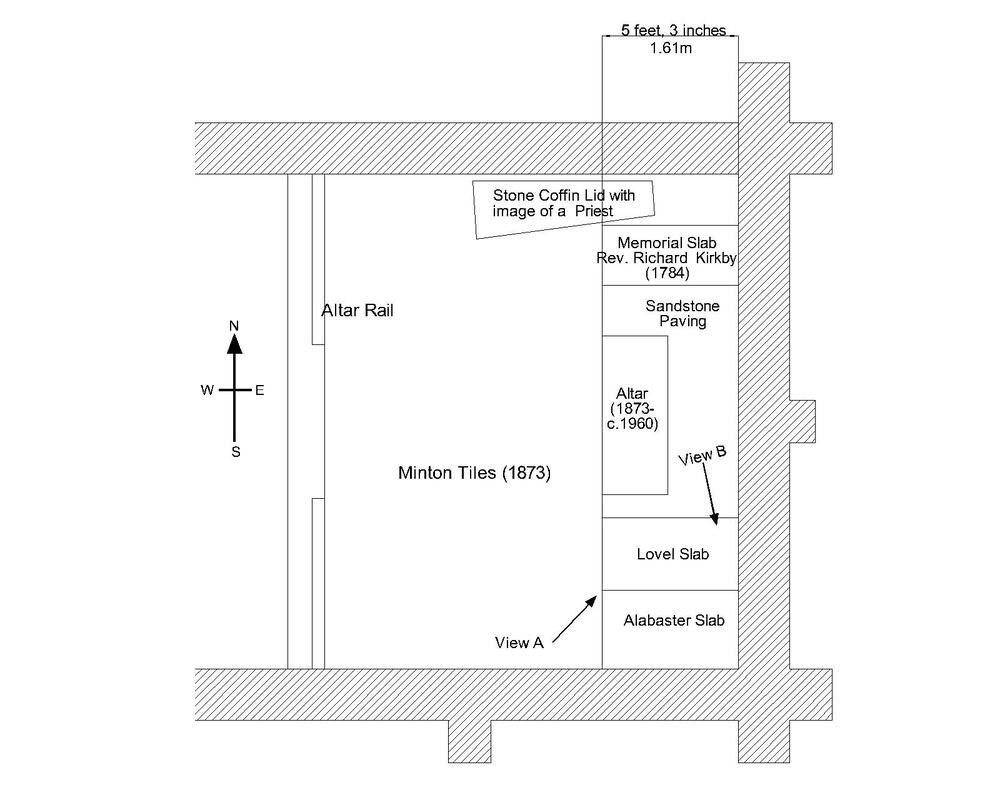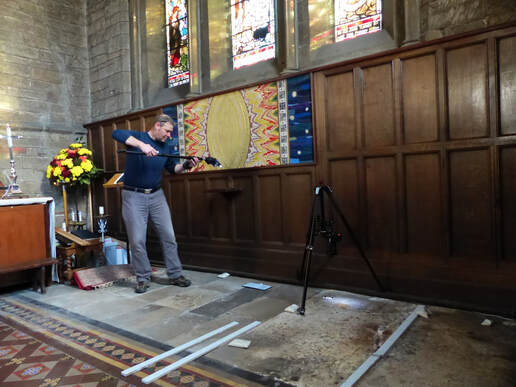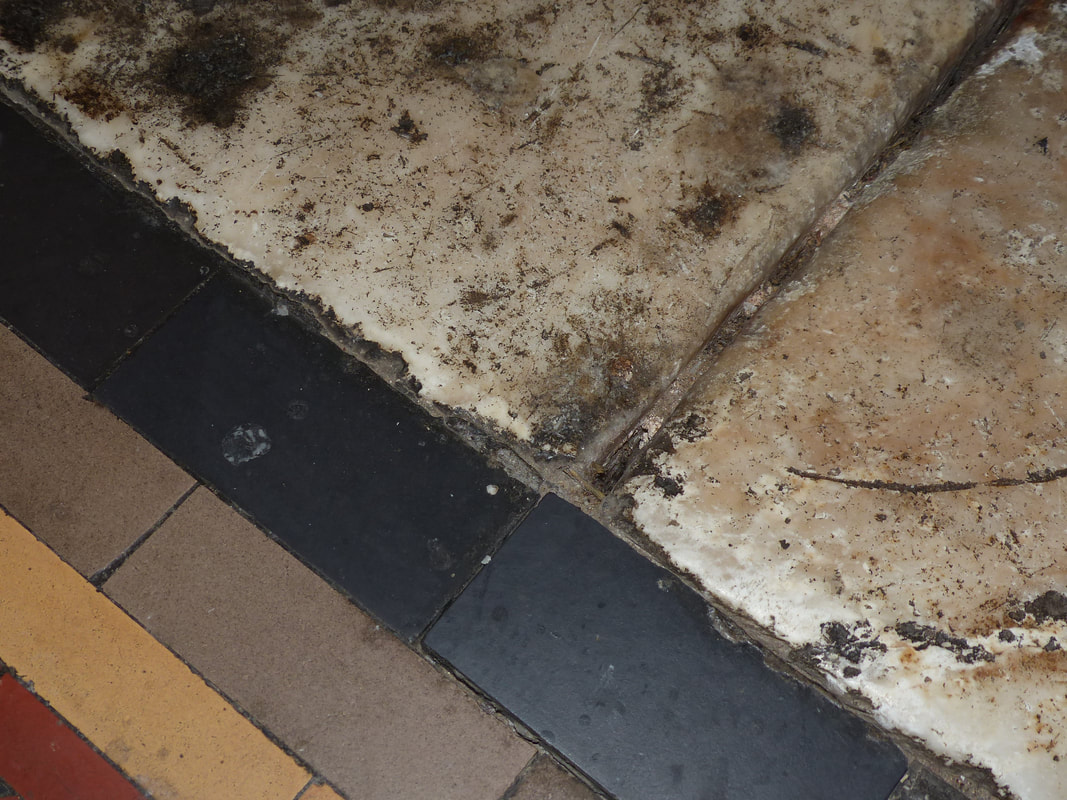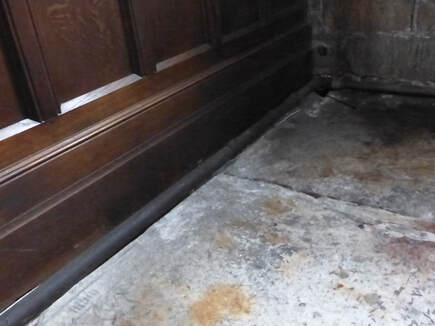Could the slab have commemorated someone from Gedling?
Incised alabaster slabs were introduced in the fourteenth century and their use came to an end in the seventeenth. During that time the Manor of Gedling was held by the Bardolf family or their descendants up to 1536 and was handed over to the Stanhope family the following year. The Stanhopes became Earls of Chesterfield and were still lords at the end of the seventeenth century.
The two families are well documented and throughout the period during which time incised alabaster slabs were available, there were thirteen Lords of the Manor of Gedling of whom eleven are known to have been buried elsewhere. The two whose burial place is unknown, died before alabaster slabs were commonly available so it is very doubtful that they were commemorated by such a memorial.
Evidence from the Lay Subsidy of 1525 demonstrates that none of their tenants living in the parish could have afforded an alabaster slab for themselves.
Full details of the Bardolf and Stanhope families and where they were buried, together with information of the number of alabaster slabs that were produced at the time are provided in Lords of the Manor of Gedling 1300-1700, their Tenants and the Lovel slab.
Click HERE to download your copy.

Is the slab complete and has it been moved?
The drawing below shows the area at the east end of the church where the Lovel slab is now located.
A memorial slab to Rev Richard Kirkby in the top right corner is only 5 feet 3 inches (1.61m) long but it has been used to set an eastern limit to the area of Minton Tiles which were laid in 1873.
View A on the left shows that the Lovel slab has been cut short with a ragged edge to allow the tiles to be laid with a straight edge and View B on the right shows that both slabs are worn smooth, even in the corner where there would have been very little foot traffic. Both of these suggest that they have been moved from elsewhere.
The drawing below shows the area at the east end of the church where the Lovel slab is now located.
A memorial slab to Rev Richard Kirkby in the top right corner is only 5 feet 3 inches (1.61m) long but it has been used to set an eastern limit to the area of Minton Tiles which were laid in 1873.
View A on the left shows that the Lovel slab has been cut short with a ragged edge to allow the tiles to be laid with a straight edge and View B on the right shows that both slabs are worn smooth, even in the corner where there would have been very little foot traffic. Both of these suggest that they have been moved from elsewhere.

Retrieving the image from the Lovel slab
A detailed photographic survey of the slab was carried out by Chris Pickup Conservation in October 2016 following a generous donation from Dr. Maggie Clamp of the Richard III Society.
Twenty-four Reflectance Transformation Imaging (rti) images were produced and can be downloaded together with information on how to examine them.
For further information and instructions of how to use the rti Click here.
The files may be downloaded from the documents page, click here to access them.
The documents page is below the ABOUT page in the menu.
One of the images shows the left foot of a man in a suit of armour
Click HERE to find out about Medieval toe caps


